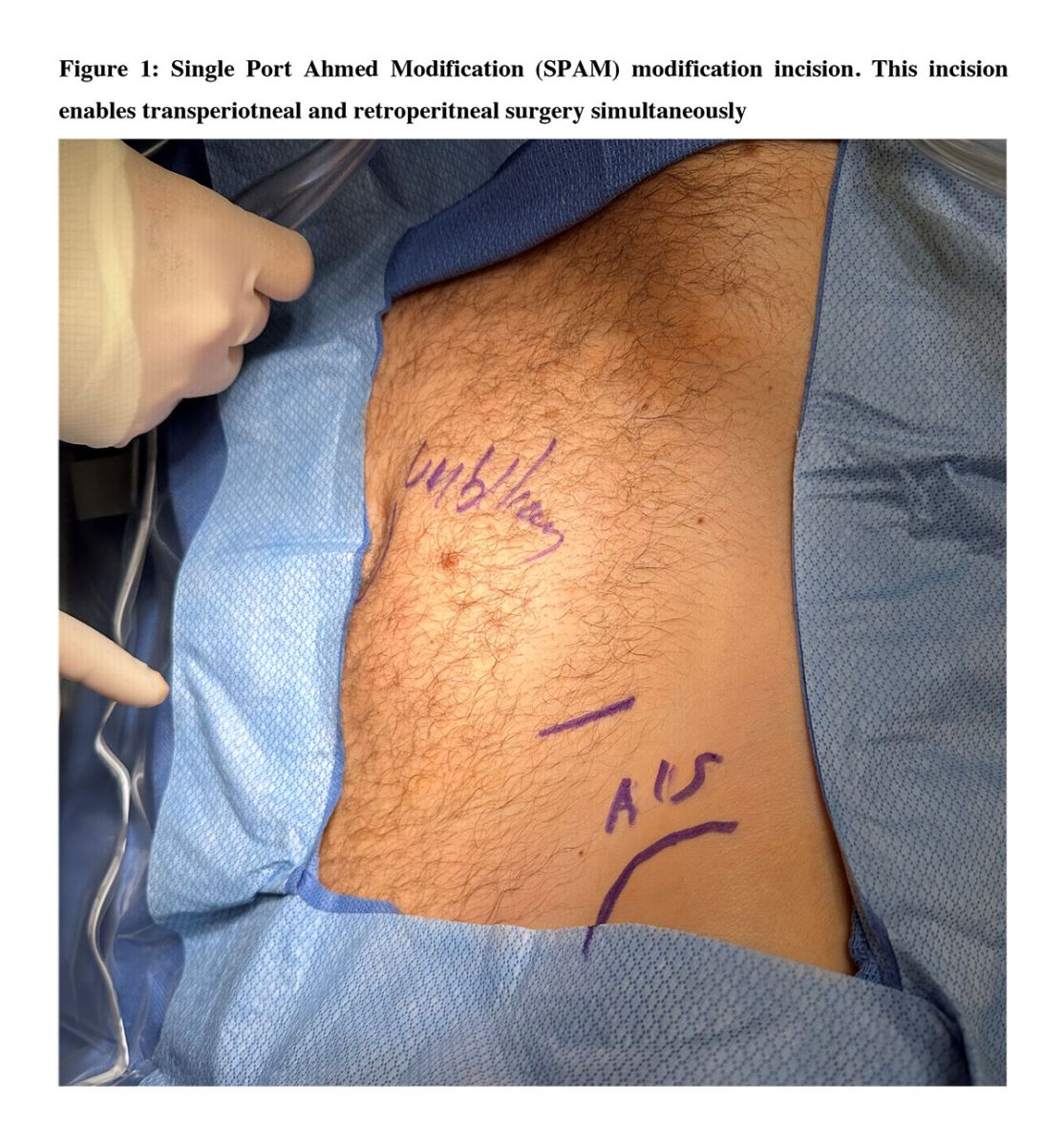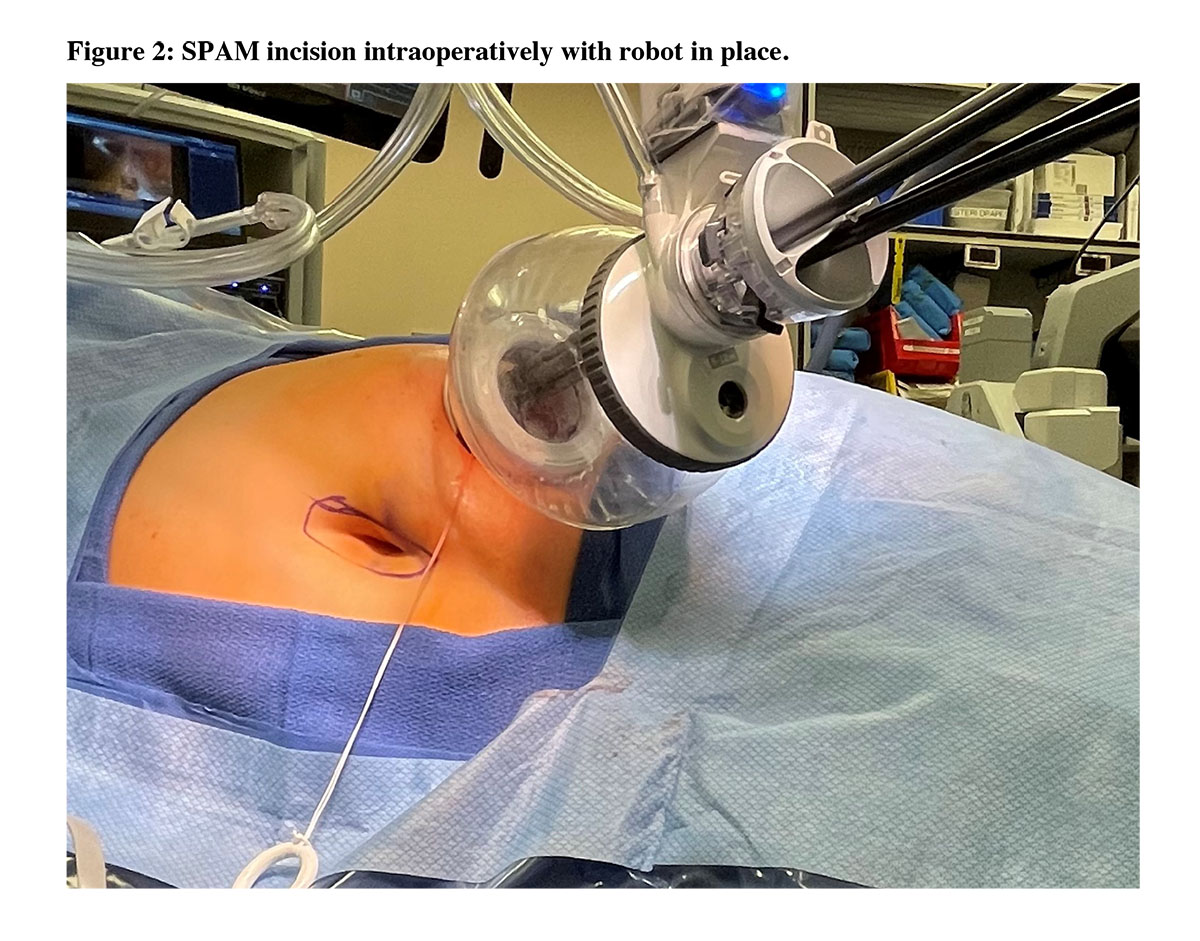Single-Port Surgery: Evolution of the latest Robotic Technology
Mutahar Ahmed MD,Mubashir Shabil Billah MD
The dream of single-incision surgery has been on the mind of surgeons since the inception of laparoscopic surgery. Laparoendoscopic single-site (LESS) surgery was the first culmination of this The concept of single-incision surgery has intrigued surgeons since the inception of laparoscopic procedures. Initially, laparoendoscopic single-site (LESS) surgery emerged as a solution, but its limited appeal and usage posed significant challenges. However, in 2018, the introduction of the DaVinci Single Port (SP) Robotic Platform revolutionized the field of single-incision surgery. This groundbreaking platform allowed for the utilization of multi-articulating arms and a camera through a single incision, incorporating the same technology urologists were already familiar with through the DaVinci Multiport Xi Robotic Platform.
Single-Port Surgery: Evolution of the latest Robotic Technology
Mutahar Ahmed MD,Mubashir Shabil Billah MD
As one of the pioneering institutions to adopt the SP robot, our team has witnessed its remarkable growth and evolution. Initially, surgeons attempted to replicate the methods used with the multiport platform, but were met with limited success. Early cases involved the direct placement of a metal trocar inside the body, similar to the Xi platform. However, this approach resulted in restricted mobility due to the limited working distance of the SP robot. To overcome this challenge, we swiftly transitioned to a floating dock system that utilized an Alexis retractor and GelPort Mini. This innovative approach allowed the trocar to remain outside the body, enhancing flexibility within the working space. Responding promptly to the needs of urologists, DaVinci introduced the DaVinci SP access port kit, which seamlessly integrated with the SP robot and offered additional advantages over the GelPort Mini, such as built-in instrument trocar sites.
Over the years, the SP platform has rapidly evolved, enabling surgeons to explore new techniques and reintroduce previous approaches. A notable example is the SP robotic-assisted laparoscopic prostatectomy (RALP). Initially, our institution performed intraperitoneal SP RALPs, following the same approach used for MP RALP. However, we quickly recognized the benefits of an extraperitoneal approach, which has now become the standard SP approach to RALP nationwide. In a comprehensive series of SP RALP patients, we have reported the advantages of this approach, including reduced pain requirements. Although we had previously performed extraperitoneal RALP over a decade ago with the MP platform, we transitioned back to the transperitoneal approach due to the lateral arms often puncturing the peritoneum, nullifying the benefits or even rendering the case impossible. The SP platform has reintroduced the extraperitoneal approach and its numerous benefits. Additionally, other approaches, such as transvesical RALP and transperineal RALP, have been enabled by the SP platform, as reported by Kaouk.
Moreover, the SP platform has transformed our approach to partial nephrectomies. While MP partial nephrectomies are typically performed transperitoneally, with only a few surgeons utilizing a retroperitoneal approach due to the limited maneuverability of MP robots in that small space, the SP platform excels in working in confined areas. Recognizing this advantage, we began performing transperitoneal SP partial nephrectomies through incisions placed either at the umbilicus or the pelvic brim to improve cosmetic outcomes. Initially, this approach closely mirrored the MP approach with minimal changes or benefits. For the extraperitoneal approach, we initially docked the robot subcostally at the level of the kidney. However, this often resulted in patients developing a bulge at the incision site, likely due to the extended incision interfering with the nerve supply to the intercostal muscles. Consequently, we sought a new approach that would capitalize on the unique capabilities of the SP platform. This led to the development of the Single Port Ahmed Modification (SPAM) approach for retroperitoneal surgeries. In the SPAM approach, we positioned the incision two-thirds of the distance between the umbilicus and the anterior superior iliac spine (ASIS). This innovative approach revolutionized our practice, allowing us to perform retroperitoneal and transperitoneal surgeries within the same case. This incision aligns with the SP robot's longitudinal movement capabilities and facilitates trocar alignment with the hilum, providing easy access for the surgeon and assistant. The SPAM approach has become the standard at our institution and is gaining popularity elsewhere. Extensive evaluation of the SPAM procedure is currently underway to assess its feasibility and reproducibility for SP partial nephrectomies and other retroperitoneal surgeries, including adrenalectomy, radical nephrectomy, and upper tract reconstruction.
The SP robot's capabilities extend to even the most complex urologic surgeries. For patients undergoing radical cystectomy, we utilize a 3cm incision at the umbilicus. Additionally, we employ natural orifice transluminal endoscopic surgery (NOTES) principles to position the second trocar for stapling at the vaginal cuff in female patients. By combining the SP platform with NOTES surgery, we achieve truly single-incision cystectomy. Witnessing a radical cystectomy with neobladder creation performed through a barely visible 3cm incision at the umbilicus is a remarkable sight. We have published the largest series to date on SP radical cystectomy, which has demonstrated reduced opioid requirements and faster recovery of bowel function with the SPAM approach. This is just one example of how SP surgery is reshaping the field.
Furthermore, the SP platform enables innovative approaches to traditional surgeries. Simple prostatectomies, for instance, are now often performed transvesically. The robot is directly docked in the bladder, which is insufflated to limit bleeding and provide excellent visualization. This approach, coupled with circumferential closure of the prostatic defect, has facilitated same-day discharge for patients undergoing SP simple prostatectomies. At our institution, the transvesical approach has also opened up new avenues for performing cross trigonal reimplantation, ureteral reimplantation, colovesical fistula repair, and vesicovaginal fistula repair.
Initially met with skepticism regarding its benefits and widespread adoption, the SP platform has proven its worth alongside the MP platform as it continues to evolve. It has facilitated new incisions, innovative approaches, and rejuvenated forgotten surgical techniques. The evolution of the DaVinci SP platform has only just begun, and we eagerly anticipate further exciting developments on the horizon.


[1] Harrison R, Stifelman M, Billah M, Zaifman J, Lulla T, Sanchez De La Rosa R, Koster H, Lovallo G, Ahmed M. Propensity-Score Matched Analysis Between Extraperitoneal Single Port and Intraperitoneal Multiport Radical Prostatectomy: A Single-Institutional Experience. Urology. 2022 Jul;165:198-205. doi: 10.1016/j.urology.2022.02.027. Epub 2022 Apr 12. PMID: 35427674.
[1] Aminsharifi A, Sawczyn G, Wilson CA, Garisto J, Kaouk J. Technical advancements in robotic prostatectomy: single-port extraperitoneal robotic-assisted radical prostatectomy and single-port transperineal robotic-assisted radical prostatectomy. Transl Androl Urol. 2020 Apr;9(2):848-855. doi: 10.21037/tau.2019.11.35. PMID: 32420199; PMCID: PMC7214976.
[1] Harrison R, Ahmed M, Billah M, Sheckley F, Lulla T, Caviasco C, Sanders A, Lovallo G, Stifelman M. Single-port versus multiport partial nephrectomy: a propensity-score-matched comparison of perioperative and short-term outcomes. J Robot Surg. 2023 Feb;17(1):223-231. doi: 10.1007/s11701-022-01415-8. Epub 2022 Jun 1. PMID: 35648289.
[1] Billah MS, Stifelman M, Munver R, Tsui J, Lovallo G, Ahmed M. Single port robotic assisted reconstructive urologic surgery-with the da Vinci SP surgical system. Transl Androl Urol. 2020 Apr;9(2):870-878. doi: 10.21037/tau.2020.01.06. PMID: 32420202; PMCID: PMC7214978.
[1] Harrison R, Ahmed M, Billah M, Caviasco C, Cheng N, Sanders A, Lovallo G, Stifelman M. Single Port vs Multiport Robotic Pyeloplasty: Propensity-Score Matched Analysis of Perioperative and Follow-Up Outcomes. Urology. 2022 Feb;160:124-129. doi: 10.1016/j.urology.2021.09.038. Epub 2021 Nov 21. PMID: 34813835.
[1] Ali D, Sawhney R, Billah M, Harrison R, Stifelman M, Lovallo G, Gopal N, Zaifman J, Ahsanuddin S, Lama-Tamang T, Koster H, Ahmed M. Single-Port Robotic Radical Cystectomy with Intracorporeal Bowel Diversion: Initial Experience and Review of Surgical Outcomes. J Endourol. 2022 Feb;36(2):216-223. doi: 10.1089/end.2021.0287. PMID: 34605663.